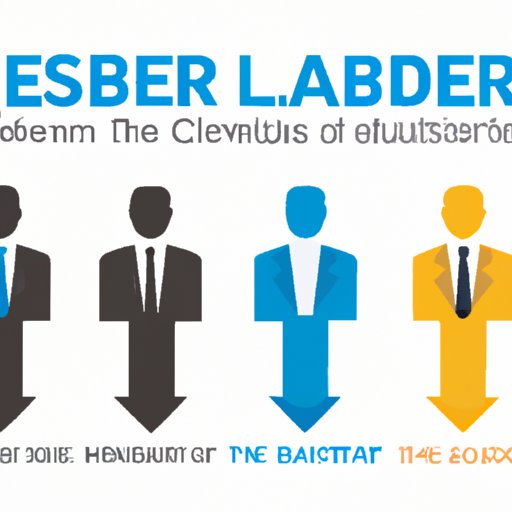Introduction
When interviewing for a job, one of the most common questions is “What is your leadership style?” It is important to be able to answer this question confidently and accurately. To do so, you must first understand what leadership style is and why knowing yours is important.
Definition of Leadership Style
Leadership style refers to a leader’s approach to motivating and directing their team. It encompasses the way a leader makes decisions, communicates with their team, and delegates tasks. Different leadership styles can have a huge impact on the success of a team or organization.

Why Knowing Your Leadership Style is Important
Knowing your own leadership style is essential for job seekers. It can give you an edge when applying for positions and provide you with insight into how you can contribute to an organization. It also enables you to better assess which jobs are the right fit for you. Furthermore, understanding your leadership style can help you develop new skills and improve your existing ones.

Describe Your Leadership Style: An Interview Guide
Identifying Your Leadership Style
The first step in crafting an effective answer to the question “What is your leadership style?” is to identify your leadership style. There are many different types of leadership styles, such as autocratic, democratic, and transformational. Think about how you approach decision-making, communication, and delegation in the workplace. Do you prefer to take charge and make decisions on your own? Or do you prefer to collaborate with others and seek input from your team? These questions can help you determine your leadership style.
Exploring Different Types of Leadership Styles
Once you’ve identified your leadership style, it’s important to explore different types of leadership styles. By doing so, you can gain a better understanding of how different styles work and how they can be used to achieve success. For example, an autocratic leadership style works best in situations where quick decisions need to be made, while a collaborative style may be more appropriate for projects that require input from multiple sources.
Crafting an Effective Answer to the Question “What is Your Leadership Style?”
When crafting your answer to the question “What is your leadership style?” it’s important to focus on the aspects of your style that are most relevant to the job you’re applying for. Describe how you use your leadership style to motivate, inspire, and direct your team. Be sure to include specific examples of how you have successfully used your style in the past.
How to Identify Your Leadership Style and Use it to Your Advantage
Assessing Your Strengths and Weaknesses
Identifying your strengths and weaknesses is key to understanding your leadership style. Consider which areas you excel in, such as communication or problem-solving, and which areas you could use some improvement in. Once you’ve identified your strengths and weaknesses, you can use them to your advantage when crafting your answer to the question “What is your leadership style?”
Understanding the Dynamics of Your Workplace
It’s also important to understand the dynamics of your workplace. Consider the type of environment you work in and how your leadership style fits into it. Are you working in a fast-paced environment that requires quick decision-making? Or is your workplace more collaborative, requiring input from multiple sources? Understanding these dynamics can help you craft an effective answer to the question “What is your leadership style?”
Analyzing Your Previous Experiences
Finally, it’s important to analyze your previous experiences. Reflect on the successes and failures you’ve had in the past. What did you do right? What could you have done better? How did your leadership style contribute to the outcome? Analyzing your previous experiences can help you refine your leadership style and hone your answer to the question “What is your leadership style?”

What Every Job Seeker Should Know About Leadership Styles
Differentiating Between Leaders and Managers
It’s important to differentiate between leaders and managers. While both roles involve motivating and directing a team, there are distinct differences. Managers typically focus on day-to-day operations and ensuring tasks are completed on time, while leaders focus on inspiring and motivating their teams. Knowing the difference between the two roles can help you craft an effective answer to the question “What is your leadership style?”
Knowing the Right Leadership Style for the Job
It’s also important to know the right leadership style for the job. Each job has its own unique requirements and challenges, and understanding these can help you determine the best leadership style to use. For example, a team-oriented style may be more appropriate for a customer service position, while a more autocratic style may be better suited for a managerial role.
Demonstrating Your Leadership Abilities in an Interview
When answering the question “What is your leadership style?” in an interview, it’s important to demonstrate your leadership abilities. Provide concrete examples of how you have led teams in the past and discuss the results of your efforts. Showcase your ability to think strategically and your willingness to take initiative. By demonstrating your leadership abilities, you can create a positive impression and increase your chances of getting the job.
The Benefits of Knowing Your Own Leadership Style
Knowing your own leadership style has numerous benefits. It can improve your self-awareness and give you insight into how you can contribute to an organization. It can also enhance your communication skills and increase your confidence. Finally, it can help you differentiate yourself from other job seekers and stand out in the job market.
How to Communicate Your Leadership Style in an Interview
Being Prepared with Examples
When communicating your leadership style in an interview, it’s important to be prepared with examples. Have a few stories ready to illustrate how you have used your style to motivate and direct your team. These stories should highlight your successes and demonstrate your ability to lead.
Discussing Your Vision and Goals
It’s also important to discuss your vision and goals. Explain how your leadership style helps you achieve your goals and how it can benefit the organization. This can demonstrate your commitment to the job and your ability to think strategically.
Showcasing Your Teamwork Skills
Finally, it’s important to showcase your teamwork skills. Discuss how you collaborate with your team and how you value their input. Explain how you use your leadership style to bring out the best in your team and create a positive work environment.
Conclusion
Knowing your own leadership style is essential for job seekers. It can give you an edge when applying for positions and provide you with insight into how you can contribute to an organization. Understanding your leadership style can help you develop new skills and improve your existing ones. When crafting an answer to the question “What is your leadership style?” it’s important to identify your style, explore different types of leadership styles, and be prepared with examples. By understanding your own leadership style and communicating it effectively in an interview, you can increase your chances of getting the job.
(Note: Is this article not meeting your expectations? Do you have knowledge or insights to share? Unlock new opportunities and expand your reach by joining our authors team. Click Registration to join us and share your expertise with our readers.)
